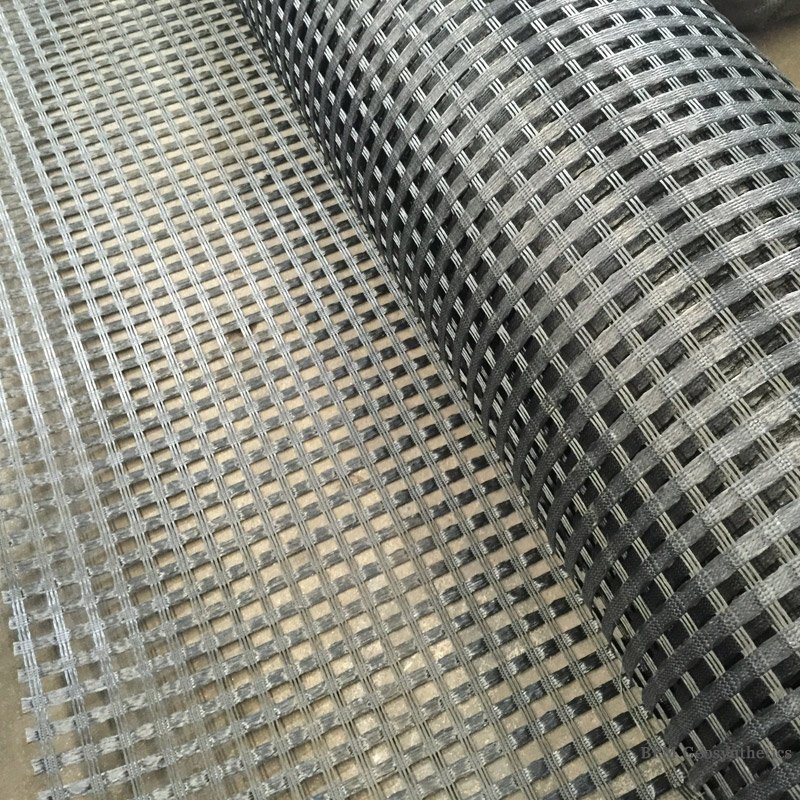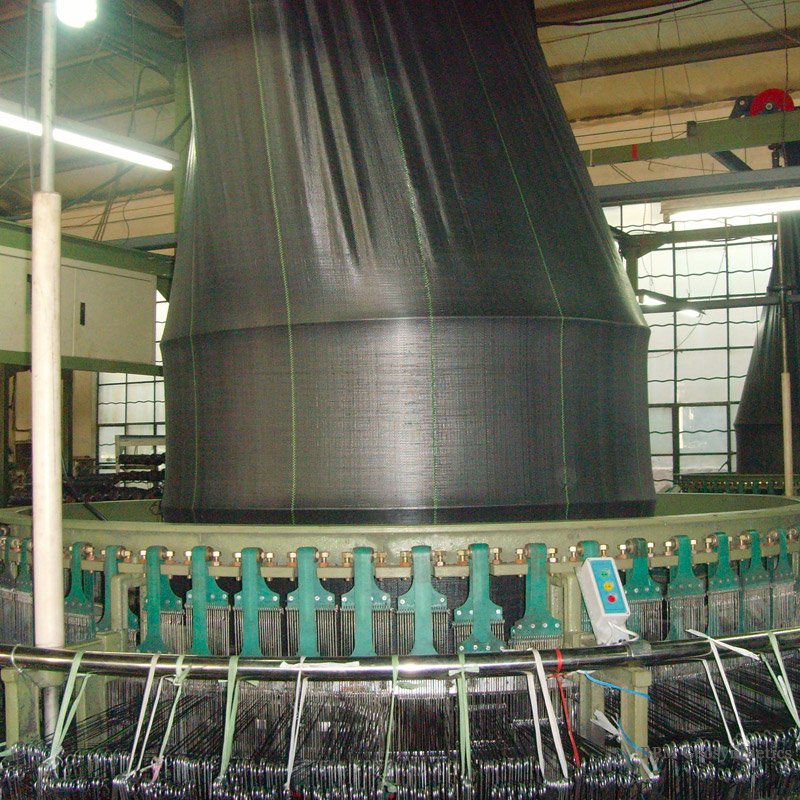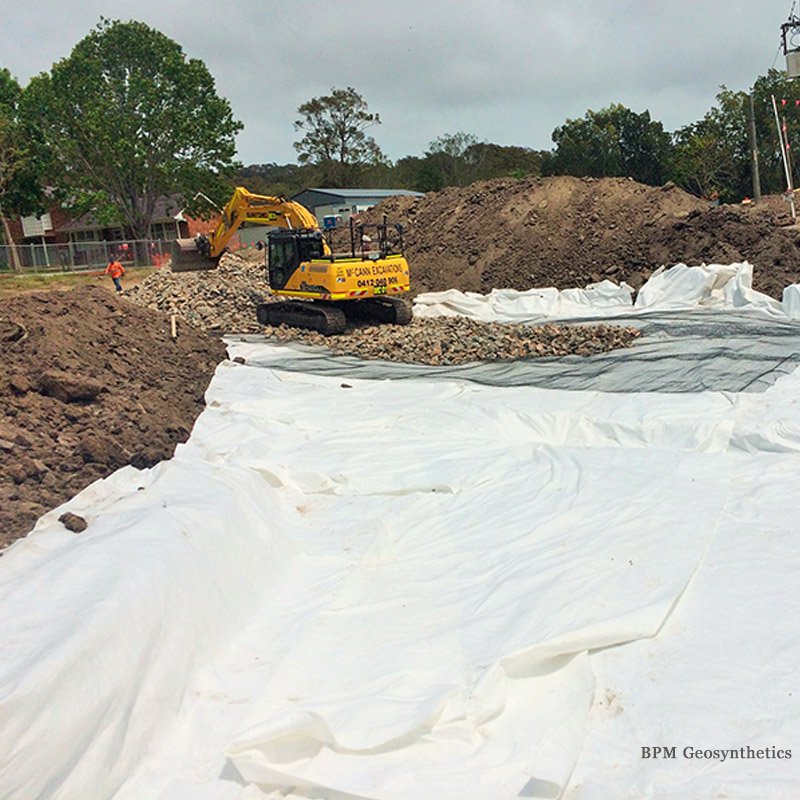Geogrids and geotextiles are both types of geosynthetic materials used in civil engineering and construction projects, but they have different functions and structural properties. The application, function, and impact of geogrids and geotextiles in materials, product structures, production processes, and engineering projects are all different. In this article, let us delve into these different aspects.
1. What are Geogrids?
Structure: Geogrids are typically made of high-strength polymers, such as polyester or polypropylene geogrid, in a grid-like pattern with open spaces between the intersecting ribs.
Polypropylene geogrid is a plastic mesh, polyester geogrids is a yarn warp knitted fabric.
| 1 | Geogrid Type | PP Biaxial and uniaxial geogrid/PET Biaxial and uniaxial geogrid |
| 2 | Specification | Depend on tensile strength |
| 3 | Color | Black, Green |
| 4 | Width | 3.95m/4m |
| 5 | Length | 30m-100m |
Types: Geogrids can be classified into two main types: uniaxial and biaxial. Uniaxial geogrids have ribs that predominantly provide strength in one direction, while biaxial geogrids have ribs that provide strength in both directions (perpendicular to each other).
Installation: Geogrids are often installed by placing them within the soil layers or in between different soil materials. The geogrids are typically secured by soil backfill or other means to ensure proper interaction between the geogrid and the soil. Easy for installation.
Soil Reinforcement: Geogrids enhance the stability of soil by confining and interlocking with the soil particles, thereby increasing the soil’s shear resistance. This reinforcement allows for the construction of steeper slopes, taller retaining walls, and stronger roadways.
Function: Geogrids primarily provide tensile strength and reinforcement to soils or other materials. They are used to enhance the stability of soil structures, including retaining walls, slopes, and embankments, by distributing loads and reducing lateral movement.
Applications: Geogrids are commonly used in applications where soil stabilization, reinforcement, and load distribution are required. They are especially useful in areas with poor soil conditions or where high loads and pressures are expected, such as road and railway construction, foundation support, and erosion control.
| NO | Geogrid Applications | Description |
| 1 | Retaining Walls | Geogrids are commonly employed in the construction of retaining walls to provide reinforcement and improve structural stability. They help distribute the loads and prevent soil movement. Geogrids can be found in various types of retaining walls, including gravity walls, reinforced soil walls, and segmental retaining walls. |
| 2 | Slope Stabilization | Geogrids are used to reinforce slopes and prevent slope failures. They provide strength to the soil mass, allowing steeper slopes to be constructed safely. Geogrids are often used in highway embankments, railway cuttings, and other earthwork projects. |
| 3 | Road and Pavement Construction | Geogrids are used in road and pavement construction to enhance the strength and durability of the structures. They help distribute the loads and reduce the risk of cracking and rutting. Geogrids can be used in applications such as road base reinforcement, asphalt overlays, and unpaved road stabilization. |


2. What is Geotextiles?
Structure: Geotextiles are woven or non-woven fabrics made of synthetic fibers, such as polypropylene or polyester. They have a porous structure with varying permeability and filtration characteristics.
Types: Geotextiles are available in woven and non-woven forms. Woven geotextiles are produced by interlacing synthetic fibers, creating a strong and durable fabric. Non-woven geotextiles are made by bonding or needle-punching synthetic fibers together, resulting in a fabric with filtration and drainage properties.
| 1 | Weight | 100g-1000g |
| 2 | Color | Black, White, Green, Orange, Gray etc |
| 3 | Width | 1m–6m |
| 4 | Length | 30m-200m |
Functions:
Separation: Geotextiles are used to separate different soil layers, such as preventing the mixing of fine-grained soils with coarse-grained soils. This separation helps maintain the stability and performance of the overall structure.
Filtration: Geotextiles act as filters by allowing water to pass through while preventing the migration of fine particles. They are commonly used in drainage systems to prevent clogging and maintain proper water flow.
Drainage: Geotextiles can provide a pathway for water to flow through while preventing soil erosion. They are used in applications such as subsurface drainage systems, retaining walls, and sports field drainage.
Erosion Control: Geotextiles are employed to protect soil surfaces from erosion caused by wind, water, or waves. They can be used in coastal protection, slope stabilization, and riverbank protection projects.
Applications: Geotextiles find applications in various civil engineering projects, including road construction, landfills, coastal protection, drainage systems, and erosion control. They can be used as a barrier between soil layers, as a filter to allow water flow while preventing soil movement, or as a protective layer to prevent erosion.
| NO | Applications | Description |
| 1 | Road Construction | Geotextiles are used to separate different soil layers in road construction projects. They prevent the mixing of subgrade soil with aggregate layers, reducing the risk of contamination and maintaining the structural integrity of the road. Geotextiles also help with drainage and filtration in road systems. |
| 2 | Landfills | Geotextiles are utilized in the construction of landfill liners and caps. They act as a barrier between the waste materials and the surrounding soil, preventing the leaching of contaminants and promoting proper drainage within the landfill system. |
| 3 | Erosion Control | Geotextiles are extensively used for erosion control in various applications. They are employed in coastal protection projects to prevent shoreline erosion, in riverbank stabilization to mitigate bank erosion, and in slope protection to prevent soil erosion caused by rainfall or runoff. |


These are just a few examples, but geogrids and geotextiles have found applications in a wide range of projects, including bridge abutments, railway platforms, mining operations, stormwater management systems, and more.
3. Summary
In summary, from the perspective of product structure, geogrids and geotextiles have different materials and production processes, and their roles and impacts in engineering projects are also different. In many projects, two products need to be used in conjunction with each other, and one is indispensable.
BPM Geosynthetics is the leadinf geogrid and geotextile manufacturers and suppliers. Any questions, please contact us.





